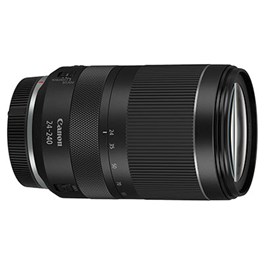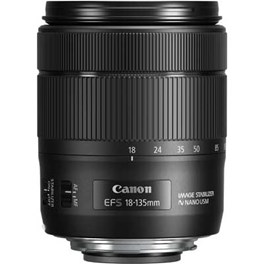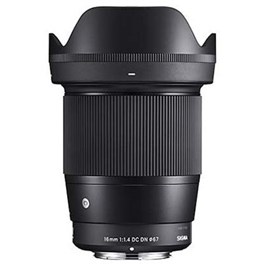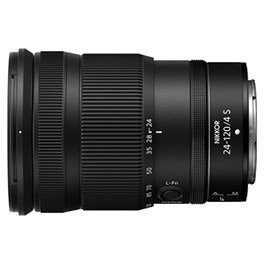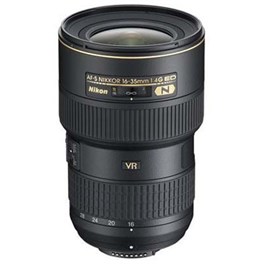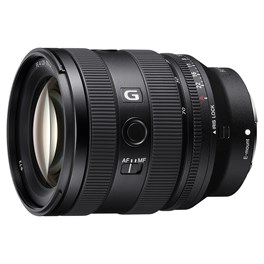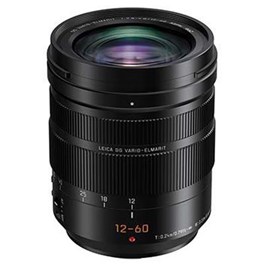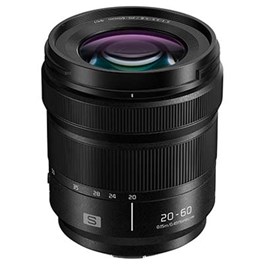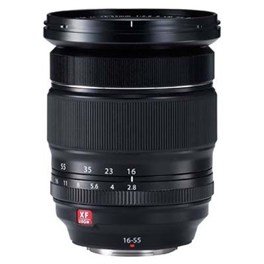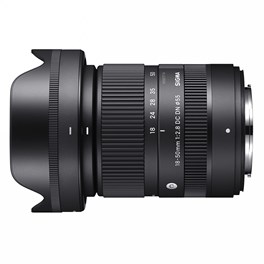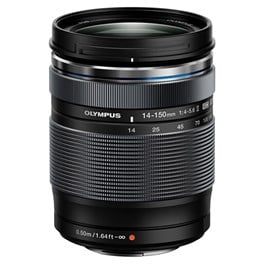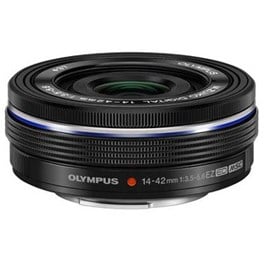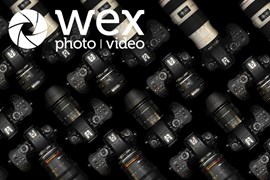
In our guide to the best lenses for travel filmmaking, we’re running through the best glass for shooting on the move. With high optical quality and zoom flexibility in a small package, these lenses are ideal for exploring the city, trekking through forests or wherever else your travel shoots take you.
The needs of travel filmmakers are quite specific, so we’ve narrowed down our criteria when selecting lenses for this guide. For our money, the key criteria for a good travel filmmaking lens are as follows:
Decent zoom range - We all love shooting on primes – both for the optical quality and for the lovely big apertures. However, most travellers simply don’t have the luxury of carrying too many lenses around with them, and will need more flexibility than they can get from a single focal length. While you don’t necessarily need a huge zoom, a little focal wiggle room is generally going to be very welcome when travel filmmaking.
Quiet or silent focusing - When travel filmmaking, you’ll likely want to take advantage of the cutting-edge video autofocus offered by newer cameras – but it won’t be much use if a whirring, buzzing focus motor dominates your audio. Focusing that’s whisper-quiet – or better yet, silent – is a real asset here.
Lightweight build - Travel filmmaking is all about mobility and flexibility. If a lens is too physically heavy, you’re simply not going to want to take it out and shoot with it for long periods, no matter how stunning its optical quality.
Affordability - Travel is already expensive enough, and filmmaking shouldn’t be the exclusive province of the wealthy. That’s why we’ve made sure to populate this list with plenty of lenses that keep costs fairly low. You can rest assured that there are plenty of premium, pro-grade lenses that are great for travel filmmaking – but that’s not what we’re focusing on here.
So, let’s get into our full list of the best lenses for travel filmmaking.
Quick Navigation
Best Canon Lens for Travel Filmmaking
Travel filmmakers using Canon kit may be using any number of different cameras. You might have opted for a mirrorless EOS R camera, like the full-frame, high-resolution EOS R5 or the beginner-focused EOS R10. Alternatively, you may have embraced DSLR filmmaking – after all, Canon really was the pioneer in this department, and many of its newer DSLRS like the EOS 90D, EOS 850D or EOS 5D Mark IV are still fantastic choices for video use. There’s another option too – while Canon's ightweight mirrorless EOS M cameras are seemingly being phased out in favour of the R series, what cameras still remain are great for vloggers and those who prize a portable setup.
It can be confusing trying to remember which lens goes where in the Canon ecosystem, so we’ve got you covered.
Just remember that RF lenses fit EOS R cameras only.
EF lenses fit Canon EOS DSLRs natively, and can also fit EOS R mirrorless cameras via the EF-EOS R adapter. Generally, they will also be able to offer full functionality of features like stabilisation and autofocus.
EF and RF lenses will fit all sensor sizes, while EF-S and RF-S will only work with APS-C cameras (double-check if you aren’t sure which sensor type your camera has).
EF-M lenses fit EOS M cameras only.
Okay, let's get going!
Canon RF 24-240mm f4-6.3 IS USM Lens
The Canon RF 24-240mm f4-6.3 IS USM is a portable, versatile 10x zoom lens for the EOS R system that's ideal for everything from wide-angle landscapes to frame-filling portraits, and even close-up sport and wildlife. This lens represents a new standard in full-frame image quality, especially at this focal range.
£909.00 View
Pros:
- Extremely convenient zoom range
- Very respectable quality for a superzoom
- Nice and light
Cons:
- Restrictive maximum aperture
- Edge softness at extreme zoom ends
Canon has redefined what a superzoom can be with this hugely impressive lens for the EOS R mirrorless range. Lenses with big zoom ranges were once thought of as cheap, optically inferior things that would never hold up for serious use – but the Canon RF 24-240mm f4-6.3 IS USM Lens has flipped this on its head.
Now, does it offer the same level of optical quality and contrast as a high-end prime? No, of course not. But does it produce a sharper image than it has any right to, considering that 10x zoom range? You bet. And with a weight of just 750g, the Canon RF 24-240mm f4-6.3 IS USM Lens makes a very credible case for itself as potentially being the only lens you need to bring on a travel shoot. It covers a focal range from wide to telephoto and produces excellent shots throughout. Granted, it relies quite a bit on Canon’s in-camera corrections, but you’ll only really notice this if you turn them off. And why would you?
Canon EF-S 18-135mm f3.5-5.6 IS Nano USM Lens
From landscapes to portraits to movies, this versatile Canon EF-S 18-135mm f3.5-5.6 IS USM lens is an all-round zoom well-suited for travel. Nano USM technology allows the lens to focus smoothly and quietly, making it well-suited for movies as well as stills. Canon's 4-stop Optical Image Stabiliser technology counteracts camera-shake for steady handheld results in low light, and features a panning mode for tracking moving subjects. For movies, there's also Dynamic Image Stabiliser, which counteracts extreme movements as well as camera-shake, allowing for smoother footage when shooting handheld.
£484.00 View
Pros:
- Smooth, silent autofocus
- Effective image stabiliser
Cons:
- APS-C only
- Not weather sealed
Users of APS-C DSLRs like the Canon EOS 90D get something quite special here – a long zoom covering an equivalent focal range of 28.8-216mm, and delivering respectable quality throughout that range. Canon’s EF-S 18-135mm f3.5-5.6 IS Nano USM lens is very affordable considering the level of versatility it offers, and when you factor in useful features like its Nano USM autofocus system and the 4-stop image stabiliser, you start to see how much potential it has for the travel filmmaker.
One thing to note though is that this lens isn’t fully weather sealed, so you will need to be careful about the conditions you use it in. Also, as mentioned, its EF-S designation means it’s suited to APS-C DSLRs only. Users of Canon’s full-frame DSLRs may want to consider something like the Canon EF 24-105mm f4L IS II USM Lens as a solid travel filmmaking option.
Sigma 16mm f1.4 DC DN Contemporary Lens for Canon M
True to Sigma’s line of Contemporary Lenses, the 16mm f1.4 DC DN Lens is a carefully constructed wide-angle lens incorporating the essentials of modern technology into a compact, lightweight build. Offering an intricate arrangement of 16 elements in 13 groups complemented by a powerful autofocus system and a maximum f1.4 aperture, this lens provides image quality that rivals the Sigma Art Series.
£389.00 View
Pros:
- Very compact and portable
- Bright max. F1.4 aperture
- Great for vlogging and travel filmmaking
Cons:
- No image stabilisation
- A little soft at wide f1.4 end
As mentioned earlier in this guide, Canon’s EOS M mirrorless cameras seem to be being phased out in favour of the R series — it looks that way for M lenses also. However, there are still third-party options out there for the Canon M cameras that remain, and they’re pretty decent too. Sigma is well known for producing some fantastic lenses. It’s almost unfair to refer to them as third-party as that term suggests that they’re not as good as native lenses; and with Sigma, that simply isn’t the case.
This Sigma 16mm f1.4 DC DN is part of the contemporary lens lineup and as such is packed with top-of-the-line features that help produce fantastic image quality. On Canon M crop-sensor bodies, this 16mm lens offers roughly a 24mm focal range in full-frame terms. It’s impressively compact and lightweight so combining that with its wide-angle view, it’s ideal for vlogging and travel filmmaking.
Sharpness is generally impressive, especially in the centre of the image, but it does a decent job towards the edges too. Some softness creeps in at the widest end of the zoom, but otherwise, the performance it puts in is very impressive. It's a shame that there is no image stabilisation but if you’re into your travel filmmaking, you may already own a simple gimbal that will alleviate any shakes you’d see from handheld shooting.
Best Nikon Lens for Travel Filmmaking
Whether you’re using a Nikon Z mirrorless camera or an F-mount Nikon DSLR, you’ve got a great deal of choice when it comes to lenses for travel filmmaking. The Nikon system is a little less complex than Canon’s, with just the two systems to choose from – though once again, you can use an adapter to mount Z lenses onto F-mount DSLRs, in this case the Nikon FTZ adapter.
Nikon also offers lenses for both full-frame and APS-C cameras – though in Nikon’s own parlance, they are referred to as FX-format and DX-format cameras respectively. It’s not as complicated as it sounds – just as with other similar systems by Canon and Sony, the FX lenses, which fit the larger-sensor full-frame cameras, will work with everything, while the APS-C DX lenses will work with smaller-sensor cameras only. Nikon has also produced some excellent lenses for video work specifically, with quiet focusing and ergonomic handling – so let’s take a closer look at the best Nikon lenses for travel filmmaking.
Nikon Z 24-120mm f4 S Lens
This versatile, high-powered Nikon zoom lens centres around a lightweight exterior body, advanced optics, and a vast zoom range. The Nikon Z 24-120mm f4 S is suited to everything from architecture photography to cityscape explorations, whilst further boasting a constant max aperture of f4. It is also well-suited to video productions, with a fast, accurate, and reliable AF performance.
£1,079.00 View
Pros:
- Dependably good optical quality
- Minimal focus breathing
- Dust/moisture-resistant build
Cons:
- f4 max aperture
- Z series has lighter options
The “S” designation on Nikon Z lenses refers to lenses that meet a stringent standard of optical quality, and accordingly offer some of the best sharpness in the business. As such, you can expect the Nikon Z 24-120mm f4 S to deliver impressive image quality right the way through its zoom range – and it does. Really, as far as imaging performance goes, it’s a very difficult lens to fault. Images are bright and vivid, full of contrast and clarity.
With a relatively lightweight build at 630g and a construction that’s resistant to dust and moisture, the Nikon Z 24-120mm f4 S ticks a lot of boxes for the travel filmmaker. Clearly recognising this, Nikon has tuned the lens nicely for video, minimising focus breathing (the subtle but noticeable change in focal length that can occur when a lens adjusts focus) for smoother transitions. There are more lightweight options in the Z system, like the Z 24-70mm f4 S, but we love this lens for its versatility.
Nikon 16-35mm f4 G AF-S ED VR Lens
The Nikon 16-35mm f/4 G AF-S ED VR Lens is the world's first ultra-wide angle zoom lens with VR for Nikon FX-format cameras. Perfect for all types of wide angle shooting, including landscapes and interior architectural photography, it features a complex optical design with Nikon's exclusive anti-reflection Nano Crystal coat, 2 ED glass elements, and 3 aspherical glass elements.
£1,149.00 View
Pros:
- Spectacular optical quality
- Silent Wave Motor autofocus
- Vibration Reduction stabilisation system
Cons:
- Zoom range may be too wide for some
- f4 maximum aperture
While this wide zoom may strike most as a landscape lens, it actually has a lot to offer the travel filmmaker. For a start, its Silent Wave Motor autofocus system is really quite impressive – quiet and efficient – and the inclusion of Vibration Reduction stabilisation puts walking shots in play. Then there’s the image quality – which is absolutely stellar, right the way through the zoom, thanks to the sophisticated optical construction that includes three aspherical elements to control for distortion, two extra-low dispersion elements that reduce colour fringing, and Nano Crystal Coating that suppresses flare and ghosting.
It’s a shorter zoom than many others on this list – which may suit you, and may not. The relatively lightweight build of this lens means it’s also suitable for use with Nikon’s DX-format APS-C DSLRs, on which it’ll provide an equivalent focal length of 24-52mm. For a similarly priced lens with a bit more reach and breadth, try the Sigma 24-70mm F2.8 DG OS HSM Art Lens.
Best Sony Lens for Travel Filmmaking
Sony is one of the most exciting innovators around when it comes to portable, high-end video kit. If you haven’t already, check out the brand new Sony ZV-E1, which packs a sophisticated full-frame sensor into a slim, vlogger-friendly body. The same goes for lenses, and whether you’re using Sony’s full-frame kit or some of its more affordable APS-C mirrorless cameras, there are some terrific video lenses out there.
We’ve kept things simple here and picked you one of each – a full-frame lens and one for APS-C. But it’s worth emphasising that there really are a lot (like, a lot) of worthy Sony lenses that could have taken these spots. So, if you’re feeling like these options aren’t quite hitting the spot – the zoom range isn’t quite where you’d want it, the price is a little high, or you’d want a bit more play on the maximum aperture – then shop around for some of the alternative Sony E-mount lenses on offer.Sony FE 20-70mm f4 G Lens
The Sony FE 20-70mm f4 G Lens is an all-in-one solution for stills and video projects. This ultra-wide standard zoom lens packs in powerful features alongside its unique focal range, including a constant f4 aperture, premium lens construction and fast autofocus. With natural circular bokeh and a fluorine lens coating repelling different contaminants, you can effortlessly create stunning imagery.
£1,059.00 inc. Cashback View
Pros:
- Useful workhorse focal length
- Minimal focus breathing / focus shift when zooming
- Hardy, moisture-resistant build
Cons:
- More expensive than other options
- Some focusing noise
A newer lens from the Sony camp, the FE 20-70mm f4 G lens has been designed for those who are hankering for an all-in-one workhorse for most of their projects. As such, it’s an ideal choice for the travel filmmaker. Its 20-70mm zoom range may not sound like the widest, especially compared to some of the other options on this list, but in reality it’s the focal range you’re likely to be working most of the time. Sony has cleverly optimised this lens for video, with minimal focus breathing or focus shift occurring when you zoom, and it’s also built nice and tough. We wouldn’t exactly throw it in a river and expect it to come up smiling, but it’ll cope in the rain with no issues.
One thing to bear in mind though is that the focusing action, while quick and certainly quiet, is not completely silent – so you may pick up a little of it in your audio.
Sony E 16-50mm f3.5-5.6 OSS Lens
The Sony E16-50mm f3.5-5.6 OSS lens is a retractable zoom perfect for travelling and other scenarios that require a lightweight, compact camera and lens combo. When fully retracted the lens is just 29.9mm, yet covers a wide 16mm to 50mm range (35mm equivalent 24-75mm) for flexible shooting. The lens features one ED (Extra-low Dispersion) and four aspherical elements, resulting in a high-performance lens that is surprisingly portable. The Power Zoom with manual override is the first E-mount lens with an electrically driven zoom mechanism.
£279.00 View
Pros:
- Brilliantly affordable
- Very small and lightweight
- Minimal focus breathing
Cons:
- No weatherproofing
- Audible zoom motor
One of the cheapest E-mount lenses around, the Sony E 16-50mm f3.5-5.6 OSS Lens is often included as a kit lens with APS-C Sony mirrorless cameras like the vlogger-focused Sony ZV-E10. As such, it makes for an excellent starter lens for filmmakers and photographers alike, and its 116g weight means it’s a featherweight addition to any travelling kit bag. Despite this, it is a metallic build, not just plastic, which is nice to see.
Of course, at this price point you do make some compromises. The lens is not weatherproofed, so you’ll need to be careful when shooting outdoors, and its zoom motor does make an audible noise when engaging. Still, the autofocus is lightning-fast, and having Optical SteadyShot image stabilisation is a huge help when shooting on the move. We’d recommend this lens to any Sony APS-C shooter looking for a basic travel vlogging lens – it gets the job done without fuss.
Best Panasonic Lens for Travel Filmmaking
Panasonic has been ahead of the curve in terms of vlogging and video for quite some time. Its mirrorless Micro Four Thirds Lumix G cameras were some of the first to offer 4K resolution, and these days its Lumix S models are redefining the meaning of full-frame portability. As such, it pays to do some research and get the right lens for your Panasonic camera – and you have no shortage of choice.
For Lumix G models, the entirety of the vast Micro Four Thirds range is at your disposal. While we’ve picked a Panasonic-made lens here, you can also freely use lenses made by Olympus and OM-SYSTEM, so check out that section later on in this guide if you’re in need of more suggestions. For Lumix S, meanwhile, the L-mount alliance between Panasonic, Sigma and Leica means that some of the best lens manufacturers in the business are heavily invested in the system. And we probably don’t need to explain that that’s a good thing, as far as your filmmaking is concerned.
Panasonic 12-60mm f2.8-4.0 LEICA DG VARIO-ELMARIT POWER O.I.S. Lens
The Panasonic 12-60mm f2.8-4.0 Leica DG Vario-Elmarit Power O.I.S. Lens with Micro Four Thirds fit is a versatile zoom capable of smooth, silent operation for both stills and video. Suitable for a variety of shooting situations, its wide f2.8-4.0 aperture provides a beautiful defocus effect, whilst the POWER Optical Image Stabiliser compensates for blurring, allowing for handheld shooting even in dimly lit environments. The lens also features a compact, rugged, splash- and dust-proof design.
£799.00 View
Pros:
- Highly effective Dual IS
- Jack-of-all-trades focal range
- Consistently short minimum focus distance
Cons:
- Max aperture drops when zooming in
This effective, flexible zoom lens is an ideal choice for the travelling filmmaker. With an equivalent focal range of 24-120mm, it covers you for a lot of shooting situations in one, and the Dual IS is hugely effective when paired with a Panasonic body that has its own in-body stabilisation. The systems work in tandem to produce a stabilisation effect rivalling that of a gimbal, meaning that’s one accessory you can leave at home if you’re short on space in your kit bag.
The quality the lens produces is excellent, with chromatic and spherical aberration well corrected. Video-optimised features include silent focusing, a micro-step drive in aperture control that ensures changes in brightness are dealt with smoothly, and a barycentric optical design that minimises image shift when zooming. With a dust- and splash-resistant design, this lens is ready to take whatever conditions your travels throw at it – and one last thing we particularly like is the impressively short focusing distance of 20cm. The only downside is the variable f2.8-4 maximum aperture, which is going to limit your ability to produce bokehlicious imagery with a shallow depth of field. For that, you may want to also think about packing an inexpensive prime lens with a wider aperture – the Panasonic 9mm f1.7 LUMIX G LEICA DG SUMMILUX ASPH is a good choice.
Panasonic LUMIX S 20-60mm f3.5-5.6 Lens
The LUMIX S 20-60mm F3.5-5.6 is a compact, lightweight standard zoom lens that covers ultra-wide 20mm to standard 60mm focal length for both videography and photographic excellence. The wide viewing angle makes it easier to shoot indoors where room space is limited, while a stunning close-up capability of 0.15m (maximum magnification 0.43x) supports table-top photography. The LUMIX S 20-60mm F3.5-5.6 also ensures smooth, high-quality video recording thanks to a mechanism that suppresses focus breathing.
£549.00 View
Pros:
- Well-suppressed focus breathing
- Very lightweight
- Wider than most standard zooms
Cons:
- No built-in stabilisation
If you sometimes like to get a slightly wider perspective than most standard zooms allow, the Panasonic LUMIX S 20-60mm f3.5-5.6 Lens is an excellent choice of optic for your L-mount camera. It’s impressively lightweight too for a full-frame lens, weighing in at just 350g, meaning it’ll balance well with the smaller L-mount cameras like the Lumix S5 and Lumix S5 IIX (and, for that matter, the Sigma fp L).
So, that’s already a big tick for the travel filmmaker – but the LUMIX S 20-60mm f3.5-5.6 Lens has other things going for it. For a start, it’s optically excellent – that’s something of a given when a lens has Leica in its name – but there’s also been a concerted effort to suppress focus breathing, and there’s essentially no visible breathing as focus changes, which is great for keeping your video smooth. The lens lacks its own stabilisation system – though if you stick with Panasonic-made bodies, this won’t be an issue.
Best Fujifilm Lens for Travel Filmmaking
Fujifilm has built up a stable of highly capable cameras for filmmakers, and the vast majority of its lightweight, APS-C X-series bodies are perfect for travel. Whether you’ve gone high-end and are enjoying the native 8K video resolution of the Fujifilm X-H2, or are using something more compact and entry-level like the Fujifilm X-E4, the exact same suite of lenses is available to help you get the most from your filmmaking.
And Fujifilm X-mount lenses too offer incredible character and contrast in imagery, with big apertures and bokeh-tastic performance. However, there are excellent third-party options for Fujifilm users, too – some maybe a little more optimised for the needs of run-and-gun filmmakers – so we’ve given you the choice of both. Remember also the 1.5x APS-C crop factor applies across the board when it comes to Fujifilm lenses.
Fujifilm XF 16-55mm f2.8 R LM WR Lens
The Fujifilm 16-55mm f/2.8 R LM WR Fujinon lens is an excellent lens to use and can produce some stunning imagery. It's weather-resistant and features a constant aperture of F2.8 that consists of 17 elements in 12 groups. With these, it is capable of achieving edge-to-edge sharpness across the entire zoom range and the linear motor inside allows fast and quiet autofocusing. This lens is incredibly versatile and can cater to a whole range of photographic opportunities thanks to the wide-angle to medium telephoto zoom. Not only this, but its 9 rounded aperture blades create smooth, circular and beautiful bokeh.
£979.00 View
Pros:
- Reliable, speedy, quiet autofocusing
- Very impressive sharpness
- Constant f2.8 aperture
Cons:
- No de-clicked aperture ring
- No stabilisation
We absolutely love this lens. It makes for a perfect kit lens upgrade for anyone who has outgrown the XF18-55mm f2.8-4 R LM OIS XF, but also tosses in a lot of features that make it fantastic for travel filmmakers. For a start, it’s weather-resistant, meaning you don’t have to worry about a downpour curtailing your shoot, and its constant f2.8 aperture gives you flexibility in low light. Sharpness is excellent right the way through the zoom range, which spans a very useful 24-84mm equivalent, pushing a little further on the telephoto end than many standard zoom lenses.
For video work, it might have been nice to have the option to de-click the aperture ring, allowing for smoother exposure changes. It’s also worth noting that the lens doesn't have its own stabilisation system, meaning you’ll be reliant on the camera body’s. Otherwise, there’s no reason for us not to thoroughly recommend this lens as a jack of all trades for travel filmmaking.
Sigma 18-50mm f2.8 DC DN Contemporary Lens for Fujifilm X
Characterised by its versatile application to a variety of photographic disciplines, the 18-50mm f2.8 DC DN from Sigma boasts an incredibly lightweight and compact build with a constant f2.8 aperture throughout the entire focal range. Now available for Fujifilm X Mount users, this classic Sigma lens is the ideal all-in-one optic for everything from telephoto close-ups to sweeping landscapes.
£479.00 View
Pros:
- Very good sharpness, especially in centre
- Quiet in operation
- Lightweight
Cons:
- No stabilisation
- Not strictly weatherproof
It was welcome news indeed for Fujifilm shooters when Sigma brought its 18-50mm f2.8 DC DN Contemporary lens to the X-mount. This really is an excellent lens – covering an equivalent focal range of 25-75mm, it hits the all-purpose sweet spot for filmmaking, and it’s tack-sharp to boot. It’s probably sharper than a lot of comparable native Fujifilm X lenses, especially in the centre – you’ll find some corner softness at the widest zoom and aperture settings if you go looking for it, but this is pretty much always the case with a zoom such as this.
Having f2.8 at your disposal throughout the zoom range makes this a tidy, capable lens for just about any travel filmmaking situations. And while constant apertures have a reputation for making lenses unpleasantly heavy, this one is pleasingly light, weighing just 285g. Note that it’s not officially rated as weatherproof, though it does have a rubber-sealed mount.
Best Olympus / OM-SYSTEM Lens for Travel Filmmaking
The Olympus / OM-SYSTEM range includes cameras that pack a lot of features into small bodies – and so it pays to get hold of a high-quality lens that can keep up. All Olympus and OM-SYSTEM cameras are part of the Micro Four Thirds system, meaning that there’s a lot of choice available, and you may also want to consider Panasonic-made lenses, which will work on the bodies with full functionality.
One of the key advantages of the Micro Four Thirds system is the fact that it allows for extra-portable bodies, so we’ve leaned into it, and picked out some especially slimline lenses.
Lastly, for those who don’t know, OM-SYSTEM is simply a rename of the Olympus brand, following the sale of the Olympus imaging division to OM Digital Solutions. Olympus and OM-SYSTEM cameras and lenses will all work completely interchangeably and with full functionality, so don’t worry about having to choose one or the other.
OM SYSTEM M.Zuiko Digital 14-150mm f4-5.6 II Lens - Black
The OM SYSTEM M.Zuiko 14-150mm f4.0-5.6 II lens offers Micro Four Thirds users the flexibility to shoot everything from wide-angle to telephoto. Lightweight and portable, the OM's exclusive MSC "Movie and Still Compatible" lens drive is not only lightning fast for instant auto-focusing, but also virtually silent. Whether you are shooting movies or stills, the lens won’t generate intrusive noise.
£599.00 View
Pros:
- Broad zoom range
- Amazingly lightweight
- Comprehensive weatherproofing
Cons:
- Some may want wider than 28mm equivalent
- Limited to f4-5.6
It’s hard to believe that a lens offering a 10.7x zoom range could weigh just 255g, but indeed it is so. This hardy, capable travel zoom is a filmmaker’s dream, with a virtually silent autofocus system that delivers reliable, fast results. Optically it delivers the goods too, with a construction of 15 elements in 11 groups that includes a number of specialist elements to suppress aberrations and improve overall quality.
Like many Olympus and OM-SYSTEM bodies, this lens has been comprehensively weatherproofed, so you can wield it outdoors without fear. Also, when the lens retracts, it measures just 8.3cm in length, making it easy to stow in your hand luggage for travel. Some may wish for a larger maximum aperture, especially given the drop to f5.6 at the long end of the zoom. Otherwise, this lens is a pretty complete package as far as travel filmmaking is concerned.
Olympus M.Zuiko Digital ED 14-42mm f3.5-5.6 EZ Lens - Black
The Olympus 14-42mm f3.5-5.6 EZ M.ZUIKO lens in black with electronic zoom (EZ) perfectly complements the OM-D and PEN range in size, style and performance, delivering crisp, edge-to-edge quality throughout the entire zoom range. When attached to a compact system camera with built-in Wi-Fi users can control the 3x electronic zoom from a smartphone or tablet and view what the camera sees in Live View mode, which is particularly useful for capturing group family portraits at special events. At the wide end of the focal length the lens offers a minimum focusing distance of 20cm making it great for close-up portraits and dynamic nature shots. Suitable for everyday picture taking, the extremely lightweight (93g) 14-42mm EZ lens with quiet autofocus zoom operation can be adjusted manually for smooth, precise control.
£349.00 View
Pros:
- Really, really light (93g)
- Covers 28-82mm equivalent
- Very quiet focusing
Cons:
- Tiny size makes manual focusing tricky
Frankly, we’re still not sure how they did it, but somehow, Olympus managed to cram a 28-82mm equivalent focal range into a lens that’s not much bigger than a tin of vaseline. Witchcraft? We’re not ruling it out, because the Olympus M.Zuiko Digital ED 14-42mm f3.5-5.6 EZ isn’t just a stunt lens – it also has optical quality to match. When you add in whisper-quiet focusing, you have a really solid option for travel filmmakers. It’s a lens that really shows the strength of Micro Four Thirds as a system – this certainly would not be possible on full-frame.
The Olympus M.Zuiko Digital ED 14-42mm f3.5-5.6 EZ Lens does support manual focusing, though you may find it a little tricky to operate on such a slim barrel. In any case, the AF does a solid enough job that you’ll likely rarely feel the need to intervene.

FAQs
What type of lens should I use for travel filmmaking?
It depends on your preferences and the style you're going for, but typically a versatile zoom lens with a focal range of 18-200mm or 24-70mm is a good choice for travel filmmaking. This will allow you to capture both wide landscapes and close-up details.
Is it better to use a prime or zoom lens for travel filmmaking?
Again, it depends on your preferences and style. Prime lenses generally offer better image quality and a wider aperture, which can be useful for low-light situations or for achieving a shallow depth of field. However, zoom lenses offer more versatility and convenience, allowing you to quickly change your focal length without having to switch lenses.
Should I invest in expensive lenses for travel filmmaking?
It's not necessary to invest in the most expensive lenses, but it's important to choose lenses that are of good quality and fit your needs. A mid-range zoom lens with good image stabilisation can be a great choice for travel filmmaking.
What is image stabilisation, and do I need it for travel filmmaking?
Image stabilisation is a feature that reduces camera shake, resulting in smoother footage. It can be especially useful for handheld shots or when using longer focal lengths. It's not absolutely necessary, but it can significantly improve the quality of your footage.
Can I use my smartphone for travel filmmaking, or do I need a dedicated camera and lenses?
Smartphones have come a long way in terms of camera technology and can be a great tool for travel filmmaking. However, dedicated cameras and lenses still offer more versatility and better image quality in most cases. It's a matter of personal preference and your budget.
How do we decide?
Our in-house photography experts, store staff and partners all work collaboratively to pour over these guides. The cameras and equipment recommended in our guides are based on their personal opinion, empirical experience and of course, feedback from our customers. We way up price, features, quality and the all-important 'je ne sais quoi' to make sure we recommend products that will delight and inspire.
If you would like more advice on any purchase our contact centre staff are here to help. Alternatively, you can reach us via email or social media. And don't forget. If you were to purchase anything based on our recommendations you'll be covered by our full returns policy
Buying Guides
